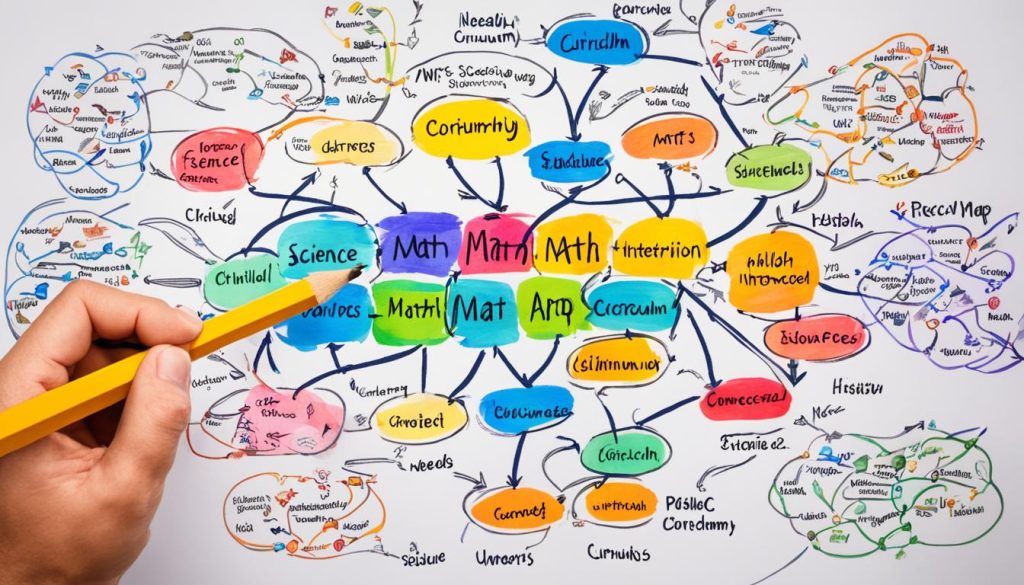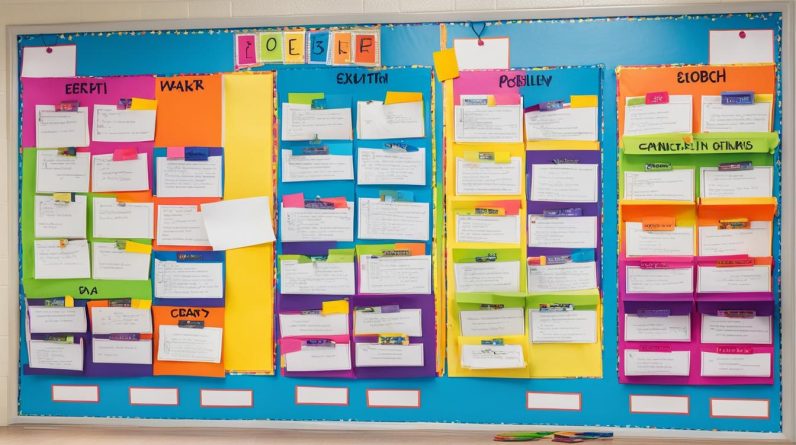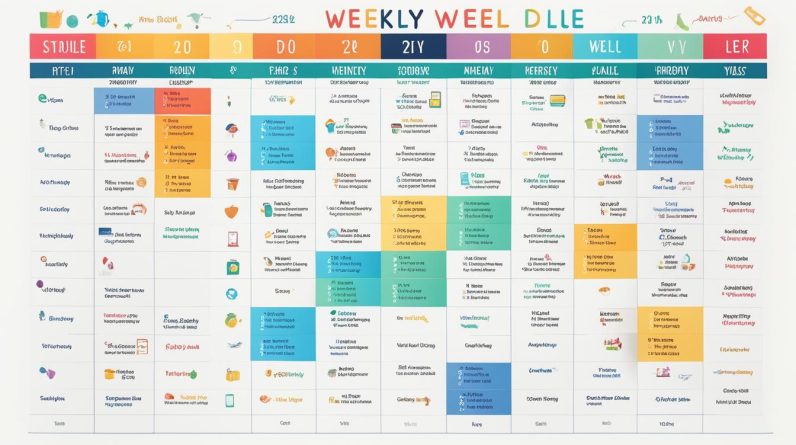When it comes to homeschooling a child with ADHD, it is important to have a tailored approach that takes into account their unique needs. In this article, you will find strategies and tips to create an effective home education environment for children with ADHD.
Children with ADHD can thrive in a homeschool setting when provided with the right strategies and support. By gaining a comprehensive understanding of ADHD, creating a flexible homeschool plan, individualizing instruction, promoting organization, using tailored learning strategies, incorporating movement breaks, setting up a snack station, using positive reinforcement, and seeking support from resources like Euka Future Learning, you can create a successful learning experience for your child.
Key Takeaways:
- Gaining an understanding of ADHD is crucial for effective homeschooling
- Create a flexible homeschool plan that caters to your child’s needs
- Individualize instruction based on your child’s learning style and preferences
- Promote organization to support focus and productivity
- Utilize tailored learning strategies to enhance engagement and learning
Gaining an Understanding of ADHD
Before embarking on homeschooling a child with ADHD, it is crucial to gain a comprehensive understanding of the condition. ADHD, or Attention-Deficit/Hyperactivity Disorder, is a neurodevelopmental disorder that affects both children and adults. By educating yourself about ADHD symptoms, challenges, and strategies for managing it, you can develop effective teaching strategies and support your child’s learning.
Understanding ADHD:
- ADHD is characterized by symptoms of inattention, hyperactivity, and impulsivity.
- Common ADHD symptoms include difficulty staying focused, being easily distracted, struggling with organization, and having trouble following instructions.
- Managing ADHD requires a multi-faceted approach, including behavioral interventions, medication (if prescribed by a healthcare professional), and lifestyle adjustments.
Challenges of ADHD:
- Children with ADHD may face challenges in academic settings, such as staying on task, completing assignments, and staying organized.
- Social interactions can also be challenging, as impulsivity and difficulty with self-regulation can impact relationships with peers.
- Time management and executive function skills, such as planning and prioritizing, may require additional support.
Managing ADHD:
- Effective management strategies for ADHD include creating structured routines, setting clear expectations, and providing positive reinforcement.
- Individualized approaches to learning, such as incorporating visual aids and hands-on activities, can help engage children with ADHD.
- Working closely with healthcare professionals, therapists, and educators can provide valuable guidance and support.
Seeking Knowledge and Resources
It is important to stay informed about ADHD and continuously seek knowledge to effectively support your child’s needs. Here are some steps you can take:
- Consult reputable sources: Access credible websites, books, and articles that provide reliable information on ADHD.
- Connect with professionals: Schedule appointments with healthcare professionals, psychologists, and educators who specialize in ADHD to gain expert insights and personalized recommendations.
- Attend workshops and conferences: Participate in workshops and conferences that focus on understanding and managing ADHD. These events offer opportunities to learn from experts and connect with other parents and caregivers.
- Join support groups: Connect with local or online support groups composed of parents and caregivers who are navigating the challenges of ADHD. These groups provide a valuable platform for sharing experiences and gaining support.
- Utilize online resources: Explore online platforms and resources tailored to ADHD, such as blogs, forums, and educational websites. These platforms often offer valuable information, tips, and strategies for managing ADHD at home.
By gaining an understanding of ADHD and accessing relevant resources, you can equip yourself with the knowledge needed to support your child’s educational journey. Remember, every child is unique, and finding the right strategies and approaches may require patience and experimentation.
Creating a Flexible Homeschool Plan
When homeschooling a child with ADHD, it is essential to establish a flexible homeschool plan that adapts to their unique needs. Let go of traditional school expectations and create a plan that works specifically for your child and your family. By doing so, you can provide an environment that promotes a positive learning experience and supports their educational journey.
Designing a Daily Schedule
To ensure a productive homeschooling routine, it is crucial to establish a daily schedule that includes specific times for learning activities, breaks, meals, and other necessary tasks. A well-structured schedule can help your child stay focused, maintain consistency, and feel more organized throughout the day. Consider utilizing visual aids or posters to make the schedule more accessible and engaging for your child.
Tip: Incorporate your child’s interests and preferences when creating the schedule. This way, they will be more motivated and engaged in their learning activities.
Benefits of Consistency
Consistency is key when it comes to homeschooling a child with ADHD. By maintaining a consistent routine, you provide your child with a sense of stability and predictability, which can help reduce stress and increase their focus. Consistency also allows for smoother transitions between activities and enhances their overall learning experience.
Utilizing Tools for Flexibility
A flexible homeschool plan should be adaptable to your child’s changing needs and interests. Utilize tools like the Euka portal, which provides clear insight into your weekly plan and allows for flexibility in coverage. This way, you can adjust your schedule and teaching approach based on your child’s progress and areas that require additional focus and reinforcement.
When creating a flexible homeschool plan, remember that each child with ADHD is unique. Be open to experimenting, making adjustments, and finding what works best for your child’s learning style and preferences. By tailoring the plan to their individual needs, you can create a supportive and effective homeschooling environment.

Benefits of a Flexible Homeschool Plan |
Challenges Addressed |
|---|---|
|
|
Individualizing Instruction
Tailor your teaching methods to your child’s learning style and preferences. Every child has a unique way of absorbing information, and by understanding their learning style, you can create a more effective homeschooling experience. Experiment with different approaches, such as visual, auditory, or kinesthetic methods, to determine what works best for your child.
If a particular teaching method or lesson isn’t resonating with your child, be open to making adjustments. It’s essential to adapt your approach to their individual needs. For example, if your child struggles with independent reading, consider reading aloud to them or allowing oral responses instead of written ones.

Incorporating hands-on activities and manipulatives can also enhance your child’s learning experience. Children with ADHD often benefit from interactive and tactile learning methods. Use resources like manipulatives, puzzles, or educational games to make learning engaging and effective.
Subject-level Adjustments
If your child requires subject-level adjustments, don’t hesitate to make those modifications. Some subjects may require additional support or a different teaching approach. Reach out to resources like the Euka teaching team for guidance and assistance. They have the expertise to help you tailor the curriculum to meet your child’s specific needs.
“Tailoring your teaching methods to your child’s learning style and making subject-level adjustments can significantly enhance their educational journey.” – Euka Future Learning
By individualizing instruction, you can create a learning environment that caters to your child’s strengths and supports their unique learning style.
| Benefits of Individualized Instruction | Examples |
|---|---|
| Enhanced engagement and focus | Using visual aids to reinforce concepts |
| Improved retention and comprehension | Allowing hands-on activities for better understanding |
| Promotion of self-confidence | Giving oral responses instead of written ones |
| Personalized learning experience | Modifying the pace of instruction |
Promoting Organization
Children with ADHD benefit from an organized and predictable environment. By working together with your child, you can create a clutter-free and calm learning space that promotes focus and productivity.
Developing routines plays a crucial role in managing their time effectively. Establish clear expectations and set specific times for learning activities, breaks, meals, and other necessary tasks. Routines provide structure and stability, helping your child stay on track.
Checklists are excellent tools for promoting organization and breaking down tasks into manageable steps. They not only help your child stay organized but also give them a sense of achievement as they complete each item on the list.

Creating a distraction-free environment is essential for maintaining focus during homeschooling. Minimize background noise, whether it’s from the TV, other family members, or external sources. Keep the learning area organized and free from unnecessary visual stimuli. Consider using dividers or curtains to separate the learning space from distractions.
Remember that not all children need to sit at a desk to learn effectively. Some may prefer to sit on a cozy reading chair, exercise ball, or even sprawled on the floor. Offer flexibility in seating arrangements to accommodate your child’s preferences and create a comfortable learning environment.
Using Tailored Learning Strategies
Children with ADHD benefit from tailored learning strategies that are specifically designed to meet their unique needs. By implementing these strategies, you can create a supportive and engaging learning environment that maximizes their potential.
- Break tasks into manageable chunks: Breaking down complex tasks into smaller, more manageable parts can prevent overwhelm and improve concentration. Encourage your child to focus on one task at a time, completing each one before moving on to the next.
- Incorporate visual aids: Visual aids such as charts, diagrams, and illustrations can enhance learning for children with ADHD. These visual representations help reinforce concepts, improve understanding, and make information more memorable.
- Utilize hands-on activities: Hands-on activities and manipulatives provide a practical and interactive learning experience for children with ADHD. These activities engage their sense of touch and movement, making learning more engaging and enjoyable.
- Engage multiple senses: Incorporating multiple senses during learning activities can enhance retention and engagement. For example, reading aloud while using tactile materials, listening to audiobooks, or incorporating music and rhymes can make lessons more stimulating and effective.
“Tailored learning strategies help children with ADHD thrive academically by providing them with the tools and methods that cater to their specific learning needs.”
– Dr. Emily Roberts, Education Specialist
By implementing these tailored learning strategies, you can create a dynamic and effective learning environment that supports the unique needs of children with ADHD.

Incorporating Movement Breaks
Children with ADHD often benefit from incorporating movement breaks during study sessions. Allow short breaks for physical activity, such as stretching, jumping jacks, or a quick walk. This helps your child release excess energy and improve focus.
Plan for short blocks of focused work time followed by breaks to prevent monotony and allow for refreshment. Encourage your child to engage in activities that involve movement to help them maintain focus and attention.
Physical activity has been shown to have a positive impact on cognitive function, attention span, and overall well-being. Movement breaks can improve blood circulation, increase oxygen flow to the brain, and enhance neural pathways, all of which contribute to better focus and learning.
Benefits of Movement Breaks:
- Enhances focus and concentration
- Improves cognitive function
- Increases alertness and energy levels
- Reduces restlessness and fidgeting
- Promotes better overall well-being
Implementing movement breaks doesn’t have to be complicated. Incorporate simple activities that your child enjoys, such as dancing, yoga, or playing a quick game of catch. These breaks can be a fun and effective way to break up study sessions and keep your child engaged.
“Movement breaks are like a mental refresh button. They provide a chance for your child to release energy, refocus, and return to their work with renewed attention.”
Remember to tailor the duration and frequency of movement breaks based on your child’s needs and preferences. Some children may benefit from short breaks every 30 minutes, while others may require longer breaks after an hour of focused work.
Sample Schedule for Movement Breaks:
| Work Time | Break Time |
|---|---|
| Morning Study Session | 10-15 minutes movement break |
| Afternoon Study Session | 10-15 minutes movement break |
| Evening Study Session | 10-15 minutes movement break |
Refer to the table above as a guide to help you plan movement breaks throughout the day. Experiment with different activities and durations to find what works best for your child.
Remember, movement breaks are not distractions; they are valuable opportunities for your child to recharge, refocus, and maximize their learning potential.
Setting up a Snack Station
Providing healthy snacks for your ADHD child is essential to maintain their concentration and focus. Set up a snack station at home where healthy snacks are readily available and easily accessible.
Having a designated area for snacks ensures that your child can easily find nourishing options when hunger strikes, without interrupting their homeschooling routine. By incorporating a snack station into your homeschooling environment, you not only support your child’s nutritional needs but also promote sustained energy levels, leading to improved concentration and productivity.
Here are some guidelines for setting up an effective snack station:
- Stock up on a variety of healthy snacks such as fruits, vegetables, nuts, and whole-grain crackers.
- Keep the snacks visible and easily accessible, ensuring they are at an appropriate height for your child to reach.
- Store the snacks in containers or bins labeled with their contents, making it easier for your child to choose a snack.
- Establish clear boundaries regarding when your child can access the snack station, such as designated snack times or breaks.
- Encourage your child to make choices within the predefined snack options, promoting independence and decision-making skills.
- Designate special snacks for specific occasions, such as celebrating a successful completion of a task or achieving a learning goal.
- Avoid consuming snacks within thirty minutes of mealtime to ensure your child’s appetite is not compromised during regular mealtimes.
By setting up a snack station with healthy snacks and clear boundaries, you can effectively manage your child’s hunger levels and support their concentration during homeschooling. Incorporating nutritious snacks into their routine will provide the necessary fuel for optimal learning and cognitive function.
Using Positive Reinforcement
Praise and reward your child for their efforts and achievements during homeschooling. Positive reinforcement can be a powerful tool in motivating and encouraging their progress. By providing rewards and recognition, you create a positive and supportive learning environment for your child.
Positive reinforcement helps your child:
- Stay motivated and engaged in their studies
- Build self-confidence and self-esteem
- Develop a love for learning
- Feel valued and appreciated
Consider implementing a token system or reward chart to track and reinforce desired behaviors and accomplishments. This allows your child to visually see their progress and provides a tangible incentive to strive for. When setting up a reward system, it’s important to:
- Clearly define the behaviors or goals you want to reinforce
- Choose meaningful rewards that resonate with your child
- Set achievable targets to create a sense of accomplishment
- Celebrate achievements and milestones along the way
| Reward Chart Example: |
|---|
Using a reward chart like the one above can help your child track their progress and motivate them to reach their goals. As they complete tasks, they earn stickers or checkmarks, ultimately working towards a predetermined reward.
Incorporate positive reinforcement into your daily homeschool routine by:
- Recognizing your child’s effort, even if they don’t achieve their desired outcome
- Praising specific behaviors or strategies they use to overcome challenges
- Offering verbal encouragement and support
- Creating a supportive and non-judgmental learning environment
Remember, positive reinforcement focuses on acknowledging and rewarding effort, progress, and positive behavior rather than solely focusing on outcomes. By implementing this approach, you can motivate and empower your child to excel in their homeschooling journey.
Seeking Support from Resources
Homeschooling a child with ADHD can be a rewarding but challenging endeavor. To ensure a successful educational journey, it is important to have access to the right support resources. That’s where Euka Future Learning comes in.
At Euka Future Learning, we understand the unique needs of children with ADHD, and we offer a tailored education approach to support homeschooling. Our well-rounded, interest-based curriculum is designed to cater to the individual learning styles and needs of each child. We believe that education is not one-size-fits-all, and we strive to provide resources and guidance that help your child thrive.
Our experienced teaching team is available to offer subject-level adjustments and support. We understand that each child with ADHD may require certain accommodations to ensure their success. Whether it’s modifying assignments, providing additional resources, or offering individualized instruction, our team is here to assist you every step of the way.
With Euka Future Learning, you don’t have to navigate the homeschooling journey alone. We are committed to guiding you through the process and offering the necessary resources and guidance to provide your child with a quality education. Join our community and let us support you and your child in their academic journey.
FAQ
What is ADHD?
ADHD (Attention-Deficit/Hyperactivity Disorder) is a neurodevelopmental disorder characterized by inattention, hyperactivity, and impulsivity.
How can I gain an understanding of ADHD?
You can gain an understanding of ADHD by educating yourself about its symptoms, challenges, and strategies for managing it. Seek reputable information sources, consult professionals, attend workshops, connect with support groups, and utilize online resources.
How can I create a flexible homeschool plan?
To create a flexible homeschool plan, let go of traditional school expectations and establish a daily schedule that includes specific times for learning activities, breaks, meals, and other necessary tasks. Maintain consistency and utilize tools like the Euka portal for clear insight and flexibility.
How can I individualize instruction for my child with ADHD?
Individualize instruction by understanding your child’s learning style and preferences. Experiment with different teaching methods, such as visual, auditory, or kinesthetic approaches. Tailor lessons to their needs by making adjustments and reaching out to resources like the Euka teaching team for support.
How can I promote organization during homeschooling?
You can promote organization by creating a clutter-free and calm learning space, developing routines, using checklists, minimizing distractions, and maintaining an organized environment. Offer flexibility in seating arrangements to suit your child’s preferences.
How can I use tailored learning strategies for my child with ADHD?
Use tailored learning strategies by breaking tasks into manageable chunks, incorporating visual aids, using hands-on activities and interactive materials, and engaging multiple senses during learning activities. Provide subject-level adjustments if needed.
How can I incorporate movement breaks during homeschooling?
Incorporate movement breaks by allowing short breaks for physical activity, such as stretching, jumping jacks, or a quick walk. Plan for focused work time followed by breaks to prevent monotony and enhance focus.
How can I set up a snack station for my ADHD child?
Set up a snack station at home where healthy snacks are readily available and easily accessible. Establish clear boundaries regarding when and what they can eat to support concentration and prevent hunger-related distractions.
How can I use positive reinforcement during homeschooling?
Use positive reinforcement by praising and rewarding your child for their efforts and achievements. Consider using a token system or reward chart to track and reinforce desired behaviors and celebrate their accomplishments.
What resources can I seek for support in homeschooling my child with ADHD?
Seek support from resources like Euka Future Learning. They offer a tailored education approach, resources, and guidance for homeschooling children with ADHD. Their teaching team provides subject-level adjustments and support to ensure a quality education.






